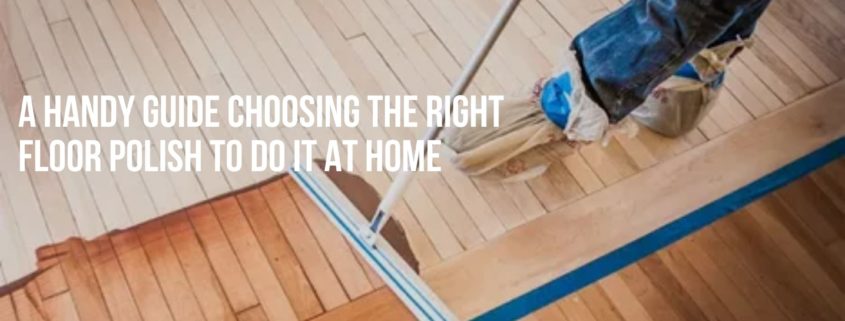A Handy Guide Choosing the Right Floor Polish to Do It at Home
A fresh coat of paint can do wonders for a home. Not only does it make it look new again, but it can also increase the value of your property. The same is true for your nails! Are you looking to get Timber Floor Polishing Melbourne-wide your wood furniture but not sure where to start? There are many different types of wood polish available on the market, and each one has its own unique set of benefits. In this blog post, we will discuss the different types of wood polish and their uses so that you can make an informed decision when purchasing a product. So, let’s get started!
How to choose the right wood polish?
Choosing the right wood polish for your furniture is important in order to maintain its longevity and prevent damage. There are a few things you should take into account when selecting a wood polish, such as the type of finish on your furniture and the level of protection you need.
For example, if you have a delicate finish, you will want to avoid polishes that are abrasive or contain harsh chemicals. If you are looking for a polish that will provide a high level of protection, look for one that contains UV inhibitors to prevent fading and features a durable sealant.
Once you have selected the right wood polish, be sure to follow the manufacturer’s instructions carefully in order to achieve the best results. So, are you looking to polish your wood furniture but not sure where to start? There are many different types of wood polish available such as:
- Water-based wood polish
Water-based polishes are safe for use on all types of finished wood without damaging its finish or leaving harmful residue behind, making them ideal for refinishing older pieces that may have been damaged over time but still contain beautiful grains underneath years’ worth of dirt buildup.

This type of polish dries quickly, so there’s no need to wait long before moving on to another section.
- Oil Finish
Oil finish is a product derived from natural sources, such as linseed oil. It can be used to polish wood and make it look beautiful. Oil finish can also protect the wood from water damage, making it more durable and long-lasting than other types of floor polishes. If you use an oil finish with the appropriate amount of coats and rub in between coats correctly, though, then this shouldn’t pose a problem at all!
- Polyurethane or PU polish
Polyurethane or PU polish is a great choice for those who want to keep the shine but not deal with the hassle of waxing. The best way to apply this type of polish is by using a foam applicator and applying in small circular motions. You’ll want to apply one thin coat at a time and wipe off any excess product before letting it dry completely. Once your floor has dried, apply another coat and repeat until you’re satisfied with how shiny your floors are.
- Wax-based wood polish.
Wax-based wood polish is a little different from the other kind of polish, as it is applied with a soft cloth. It can be used to maintain the shine of your hardwood floors, but you should only apply it once every month or so. Wax-based polish isn’t good for all types of wood.
It’s important to know what type of wood you have before choosing which type of floor polisher to use!
How do you apply the polish and how often should it be done?
Polishing your floors is an important part of keeping them looking their best. But how often should you polish, and how do you properly apply the polish?
Most floors only need to be polished every few months, but high-traffic areas may need to be polished more often. The best way to determine how often to polish is to simply clean your floors regularly and keep an eye on their appearance. When they start to look dull or scratchy, it’s time to break out the polish.

When applying polish, always follow the manufacturer’s instructions. In general, you’ll want to start in a small area and apply the polish with a soft cloth or sponge in a circular motion. Once the entire area is covered, allow the polish to dry completely before walking on it.
If you don’t have time to tackle polishing your floors yourself, consider hiring a professional Timber Floor Polishing Melbourne-wide service. They’ll have the experience and know-how to get your floors looking shiny and new in no time.
Conclusion
We’ve given you all the information you need to choose the best wood polish. Now, it’s up to you to decide which one will work best for your home. We hope that our guide helped make things easier in your decision-making process and that it helped clear up any questions or concerns about using different polishes in different situations.



 Address:
Address:  Phone:
Phone:  ABN: 63 602 512 489
ABN: 63 602 512 489




